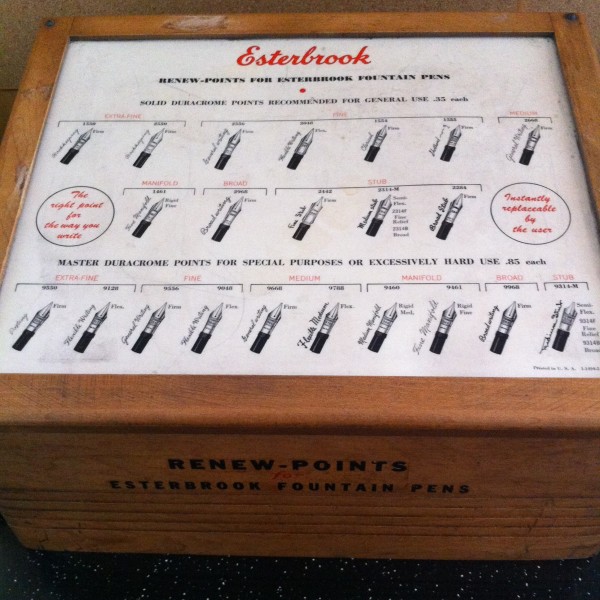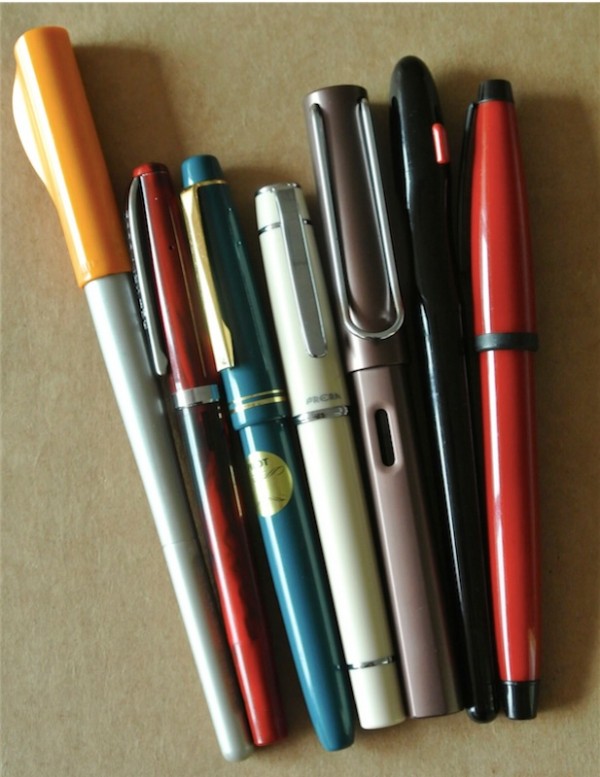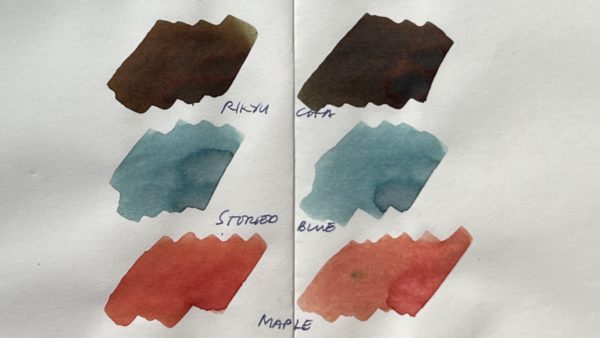Disposable fountain pens and most student-friendly ones, while certainly useful, only scratch the surface of what makes writing and drawing with a fountain pen such a gratifying experience. These entry-level pens, what beginners are usually told to start with because of the minimal investment, can end up making them feel, “Meh. That’s it?” Even expensive pens can be quirky and unsatisfying to use for a beginner who isn’t ready to pull out a loupe, check tine alignment, yank out a nib and whip out the micromesh.
To me, a serious beginner feels the need to express herself better. She could be a writer, an artist, a copious note-taker, a compulsive mind mapper, a meeting doodler, someone for whom the physical act of applying pen to paper is an inspiration. She has explored gel pens, highlighters, felt-tip markers, ballpoints of every color. Now she wants to try fountain pens.
A dear friend gave me an Esterbrook nib box for store counters. It shows 22 different kinds of nibs, and has the lines “the right point for the way you write” and “instantly replaceable by the user.”

That helped define for me what serious beginners need in a fountain pen: nib choice and ease of maintenance. Nib choice is crucial because line width and quality of line are what bring forth expressiveness. The pen needs to be easy to maintain, and good to go out of the box, because beginners want to ink up and play, not tinker.
If you consider yourself a serious beginner, consider these:
The Lamy Safari. Aside from fine, medium and broad nibs, italic and oblique are available. I have yet to buy a Safari that needs tinkering to write well. Fills by cartridge or converter.
The Pilot 78G isn’t as sturdily built as the Safari, but it has smoother writing nibs, in my opinion. Nibs come in fine, medium, broad and double broad (the broad nibs are italic). Fills by cartridge or converter (I recommend the CON-20).
Pilot Parallel Pens are for calligraphy and bold sketching. They’re not exactly fountain pens but they are the best calligraphy pens out there at any price point. Nib widths are 1.5, 2.4, 3.6 and 6.0 mm.
For those willing to spend more, the Pelikan M200 or M205 is a good entry point into customization. Richard Binder has ready-to-go custom nibs for most Pelikans in crisp italic, cursive italic, needlepoint, xxf with full flex. He also has custom nibs available for the Pilot Capless, but the Capless’ girth and clip placement is not for everyone.
No, I will not recommend a Noodler’s Ahab or Noodler’s Creaper to a beginner. Both marketed as modern flex nib pens at a reasonable price, they both require some knowledge of how fountain pens work to write the way they should.

In between the sub-$30 pen and the $150-200 a Pelikan M200 with a custom nib will cost, there are lots of options, including vintage. Many beginners become frustrated with vintage pens when the flow quality changes from the time they buy it, or when the pen starts skipping — not knowing the culprit could be a deteriorating rubber sac or buildup in the feed. When in doubt, choose an eyedropper, not a lever-filler. Eyedroppers are the easiest to maintain.
Beginners don’t stay beginners forever, and when the initial trepidation wears off, the wonderful world of tinkering awaits. I look forward to your first sac replacement. (I did mine completely, utterly wrong.)


